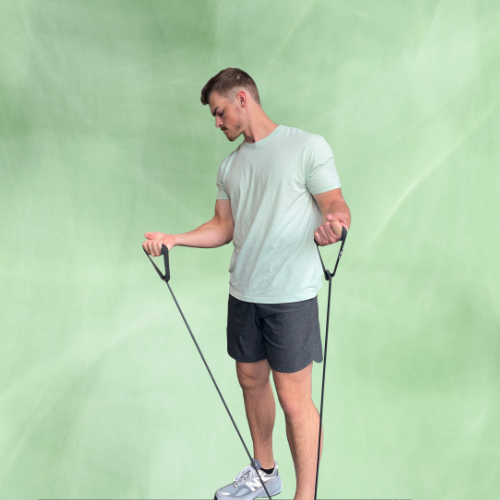
5 Common Myths About Chronic Pain Debunked
Introduction
Chronic pain is a formidable adversary that affects millions worldwide, often shrouded in misconceptions that can hinder effective management. In this exploration, we're debunking five common myths surrounding chronic pain, aiming to provide clarity and empower those navigating the often perplexing world of persistent discomfort.
Myth 1: Pain is Always a Sign of Tissue Damage
Contrary to popular belief, pain doesn't always equate to structural damage. Chronic pain can persist long after tissues have healed. It's crucial to understand that pain is a complex interplay of physical, emotional, and neurological factors.
Myth 2: Rest is the Best Solution for Chronic Pain
While rest is essential for acute injuries, it's not always the answer for chronic pain. In fact, prolonged inactivity can contribute to muscle deconditioning and increased discomfort. Engaging in targeted exercises, such as those involving resistance bands, can be instrumental in building strength and alleviating chronic pain.
Speaking of resistance bands, let's debunk another myth.
Myth 3: Resistance Bands Are Only for Intense Workouts
Resistance bands often conjure images of intense gym sessions, but they are versatile tools for various fitness levels. Incorporating resistance band exercises into your routine, whether for gentle stretches or strength-building workouts, can be a game-changer in chronic pain management. Think of them as your allies, adaptable to your fitness journey.
Myth 4: Chronic Pain is Just a Normal Part of Aging
While it's true that the prevalence of chronic pain increases with age, it's not an inevitable part of the aging process. Accepting chronic pain as a "normal" aspect of getting older can hinder proactive steps towards effective management. Lifestyle changes, exercise, and targeted therapies can significantly improve the quality of life at any age.
Myth 5: Medication is the Sole Solution for Chronic Pain
Medications play a vital role in managing chronic pain, but they aren't the exclusive solution. Relying solely on medications may overlook the benefits of a multidisciplinary approach. Integrating lifestyle changes, physical therapy, and, yes, resistance band exercises can contribute to a more holistic and sustainable pain management strategy.
Now, let's delve deeper into the misconceptions surrounding resistance band exercises.
The Resistance Band Revelation:
Resistance bands, often underestimated in their simplicity, can be powerful tools in chronic pain management. Here's why:
1. Gentle Resistance, Maximum Impact: Resistance bands offer a controlled and low-impact way to engage muscles. Unlike heavy weights, they provide resistance throughout the entire range of motion, promoting muscle activation without excessive stress on joints. This makes them particularly beneficial for individuals with chronic pain conditions.
2. Versatility for All Fitness Levels: One of the beauties of resistance bands lies in their adaptability. From beginners to seasoned fitness enthusiasts, resistance bands can be tailored to various fitness levels. Whether you're recovering from an injury or looking to enhance your workout, these bands can be adjusted to meet you where you are in your fitness journey.
3. Targeted Strength Building: Chronic pain often stems from muscular imbalances or weaknesses. Resistance band exercises allow you to target specific muscle groups, aiding in the development of strength and stability. For example, wall-mounted resistance band stations provide a stable anchor for exercises such as leg presses and hamstring curls, facilitating focused muscle engagement.
4. Joint-Friendly Rehabilitation: For those navigating chronic pain, joint-friendly exercises are paramount. Resistance bands, with their smooth and controlled movements, reduce the impact on joints while still providing an effective workout. This makes them an excellent choice for individuals with arthritis or other joint-related issues.
5. Convenience and Accessibility: One of the greatest advantages of resistance bands is their portability. Whether you're at home, in the office, or traveling, these bands can be easily incorporated into your routine. No need for an elaborate setup. And a resistance band wall mount can turn any space into your personal fitness haven.
Conclusion
Debunking myths about chronic pain is not just about dispelling misinformation but also about empowering individuals to take charge of their well-being. Understanding the nuances of chronic pain, rejecting age-related stereotypes, and embracing versatile tools like resistance bands can redefine the narrative of pain management.
So, the next time chronic pain myths loom large, remember: you have the knowledge, the tools, and the resilience to challenge and overcome them. With a well-rounded approach that includes exercise, lifestyle adjustments, and the right mindset, chronic pain doesn't have to be an insurmountable foe. It's time to rewrite the story of your pain.



